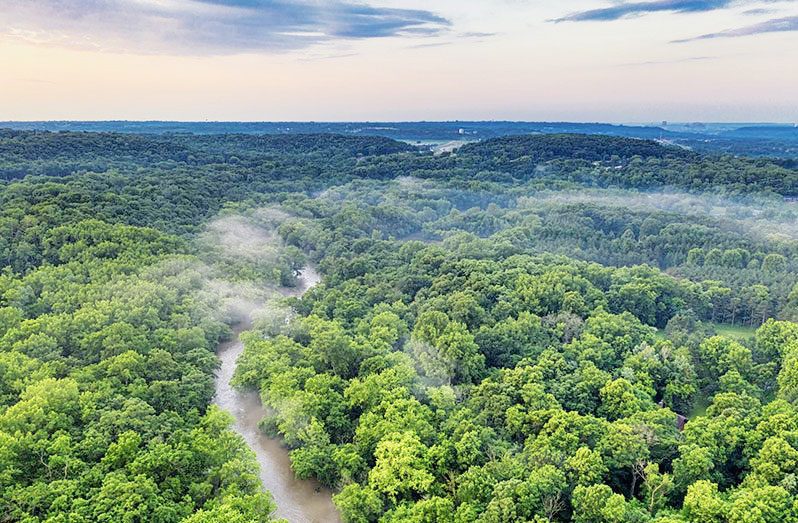–VP Jagdeo says, affirms gov’t stands ready to provide technical assistance wherever necessary
WARNING against condescension and prejudice towards Guyana’s Indigenous Peoples, Vice President Bharrat Jagdeo, on Wednesday, affirmed that it will be up to the people of the respective Amerindian villages to make their own decisions on how they will utilise the funds they receive from Guyana’s sale of carbon credits.
The Vice President emphasised that Guyana’s indigenous population are smart people who are more than capable of putting together village plans that cater to their own best interest; however, he acknowledged that the government will be more than willing to provide technical assistance to any village that requests such.
Jagdeo expressed those remarks in response to a question following his presentation on Guyana’s Low Carbon Development Strategy (LCDS) at the 2023 Energy Conference and Expo being held at the Marriott Hotel, Kingston.
On Wednesday, Toshaos across Guyana began the process to receive finds due to the villages as a result of a multi-year deal that Guyana signed last year with Hess Corporation for the sale of jurisdictional carbon credit for at least $750 million.
Questioned about the Indigenous Peoples having the necessary capabilities and resources to put together the plans for the utilisation of the money, the Vice President passionately responded that the Amerindians are more than capable on their own.
“You can’t be condescending when we’re dealing with Indigenous People. We believe we can make decisions on our own at the coastal level, so why would we think that they can’t make their decisions on how to use the money? They have to do consultations with their people,” the Vice President said to resounding applause.
“At the village level, the people have to utilise the resources for their own development plans. It is up to the villages to decide themselves how they want to utilise the resources,” Jagdeo said.
He related that it is the government’s hope that the funds will be utilised in food security and job creation or income generation initiatives, in accordance with what the government often advises for plans created under the Amerindian Development Fund, a separate budgetary allocation that the villages receive annually.
“That is where we would like to see it go, but they can use it for social purposes. They will have to make that decision. The government would like to see them focus on food security and income generating activities, but it is up to the villages how you utilise your funds, that is local democracy,” Jagdeo said.
He added: “They’re very far from the coast and many of them don’t benefit from services that a lot of people on the coast benefit from. They live in remote areas so we hope that job creation activities will see some stimulation.”
Amerindian communities in Guyana are set to receive 15 per cent of the funds from the carbon-credit deal.
The injection of a portion of the funds directly into the villages is part of recognising the stewardship role that Amerindians have played in the maintenance of Guyana’s forest, interior communities and hinterland ecosystem.
The carbon-credit deal is part of the realisation of the benefits of Guyana’s LCDS, which seeks to monetize the benefits provided by Guyana’s vast forests. An expanded, updated version of the LCDS called “LCDS 2030” had received resounding support from Guyana’s Indigenous community.
Though just 15 per cent of the carbon credit funds will be going directly to the Amerindian villages, Amerindians are still expected to benefit from the utilisation of the other 85 per cent of the money, which will be focused on climate adaptation needs across the country.
The money is expected to see a high level of scrutiny and transparency, with annual audits of all spending by the central government as well as by the indigenous villages.
“One of the things we want to prove to the world is that these funds will not be squandered, or stolen, that they can be deployed for development. So, every bit of it has to be audited. Right now they’re [the Toshaos] establishing separate bank accounts for their villages. So if these funds are placed into separate accounts we can have them audited,” the Vice President said.
He added: “Similarly, at the government level, the funds will go through a separate audit, probably with some international verification to show that they are done. The transparency in the use of the fund will remain.”



.jpg)








